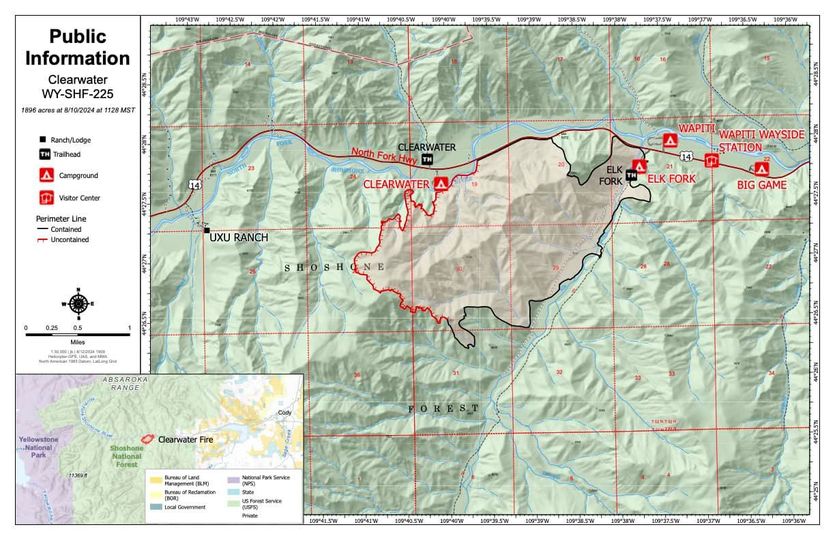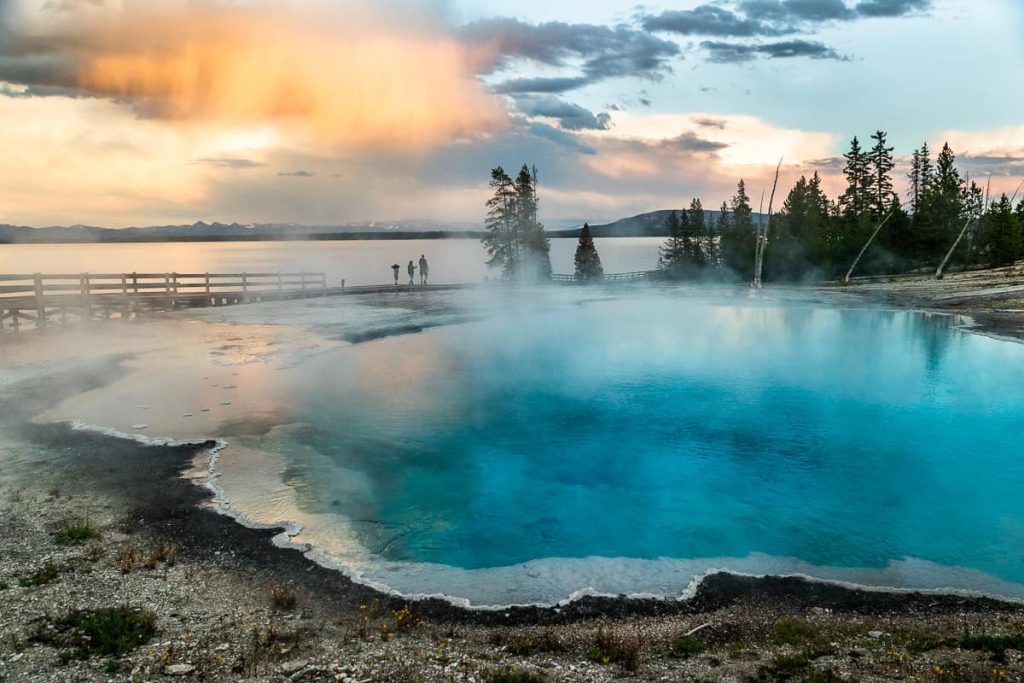Hiking in Yellowstone: A Guide to 6 Top Yellowstone Hiking Trails
Written by Nick on April 28, 2023
An Informative Guide to 6 Choice Yellowstone Hiking Trails
As thousands upon thousands of visitors discover each year, hiking in Yellowstone is one of the most immersive ways to explore America’s first national park.
Yellowstone’s 2.2 million acres are home to some incredible hiking trails that deliver unmatched scenery, giving visitors opportunities to get out of their vehicles and see one of the continent’s crown jewels in a new way. It’s just one way to enjoy a bit of solitude — if you’re looking to explore Yellowstone National Park without the traffic, check out our tips for avoiding crowds in Yellowstone.
With so many superb Yellowstone hiking trails to choose from, perhaps the most difficult part about hiking in Yellowstone is deciding where to go. That’s why we put together this helpful guide covering six trails that visitors of all experience levels can enjoy.
Use this overview of six outstanding Yellowstone hiking trails to help plan your visit.
1. Take a Leisurely Stroll Along the Pelican Creek Nature Trail
We’ll start with one of the easiest Yellowstone hiking trails: the Pelican Creek Nature Trail. This is at the top of our list because it’s by no means a technical or challenging trail, it’s easily accessible, and it offers scenery anyone can enjoy.
The trailhead is located a mile east of the Fishing Bridge visitor center, at the West end of Pelican Creek Bridge. The trail itself is a short loop, taking you through a forested area to the shore of Yellowstone Lake and back again.
This is a great hike if you’re just looking to get out of the car for a few minutes, since you can complete this trail in 30 minutes or even less. On the other hand, if you want to take in the sights and catch a glimpse of the park’s unique birds, you could easily spend an hour meandering along this trail.
2. Embrace the Challenge of the Avalanche Peak Trail
If you want to skip the easy stuff and get right to some of the most challenging Yellowstone hiking available, be sure to check out the Avalanche Peak Trail and its 2,100-ft ascent.
To find the trailhead, head to the pullout at Eleanor Lake, which is just 8 miles west of the East Entrance, or 19 miles east of Fishing Bridge Junction. From the pullout, cross the road to find the trailhead.
This point-to-point route follows one of the established Yellowstone hiking trails, but keep in mind that this particular trail is carved out of rocky terrain and bare ground. You’ll follow switchbacks up the side of Avalanche Peak, with steep grades in some spots. In total, the hike typically takes three to four hours.
Since the trail is usually covered by snow until at least early July, this is a trail best enjoyed from midsummer onward. If you have heart or respiratory issues, skip this trail.
3. See Stunning Yellowstone Flora on the Observation Peak Trail
This five- to six-hour hike takes you from the trailhead through open meadows, past Cascade Lake, all the way to Observation Peak, where you’ll enjoy fantastic views of Yellowstone’s backcountry.
It’s about two miles to the lake, where you’ll have great opportunities to view wildflowers as well as some of Yellowstone’s fauna including deer and elk.
You’ll go just over two and a half miles from Cascade Lake to Observation Peak, with a 1,400-ft elevation gain.
Find the trailhead in the Canyon region, about a mile and a quarter north of Canyon Junction. As with Avalanche Peak, this is one of those Yellowstone hiking trails you shouldn’t take if you have a heart of respiratory problem.
4. Discover a Fire Lookout on the Mount Washburn Trail
One of the most strenuous Yellowstone hiking trails, the Mount Washburn Trail is a favorite of many Yellowstone visitors. It’s a 6-mile point-to-point trail that takes you to the top of Mount Washburn, at an elevation of over 10,000 feet.
Find the trail at the Dunraven Pass parking area, about four and a half miles north of Canyon Junction. Expect this hike to take between three and six hours.
Keep in mind that grizzly bears frequent this area in the fall, so this is one of those Yellowstone hiking trails you should avoid in September or October.
The views are spectacular virtually the entire way, with opportunities to see wildflowerse and bighorn sheep, as well as a shelter and interpretive exhibits at the top.
5. Marvel as You Traverse the Boardwalks and Yellowstone Hiking Trails at Mammoth Hot Springs
Mammoth Hot Springs is an iconic site that should be on every Yellowstone vistitor’s itinerary. One of the conveniences of visiting Mammoth is that the network of boardwalks and Yellowstone hiking trails allows you to choose longer or shorter routes, so it’s easy to experience Mammoth comfortably.
The terraces at Mammoth Hot Springs are a superb place to take photos. With intriguing structures and stunning colors, it’s easy to spend entirely too much time wondering at this Yellowstone treasure.
Your hike could take anywhere from 30 to 90 minutes. Be sure to stay on the boardwalk or trail in these thermal areas, as going off-trail could either cause long-term damage to the site or result in severe injury.
6. Conquer Yellowstone’s Awe-Inspiring Sepulcher Mountain Trail
The first thing you should know about Sepulcher Mountain is that this is one of many Yellowstone hiking trails that will take you into grizzly bear country, so it’s vital that you read and understand these essential grizzly bear safety tips. Take bear spray and keep your eyes open.
This is the longert hike on our list. The Sepulcher Mountain Trail is an 11-mile loop trail with an elevation gain of 3,400 feet. From the summit of Sepulcher Mountain at 9,652 feet, you’ll take in incredible views of Yellowstone National Park’s peaks and forests.
This is an excellent place to spot bighorn sheep, moose, and mountain goats, so consider taking a camera.
You’ll find the trailhead in the northern part of Yellowstone, near the stone house north of Liberty Cap. It’s the same trailhead hikers use for the Beaver Ponds Trail.



